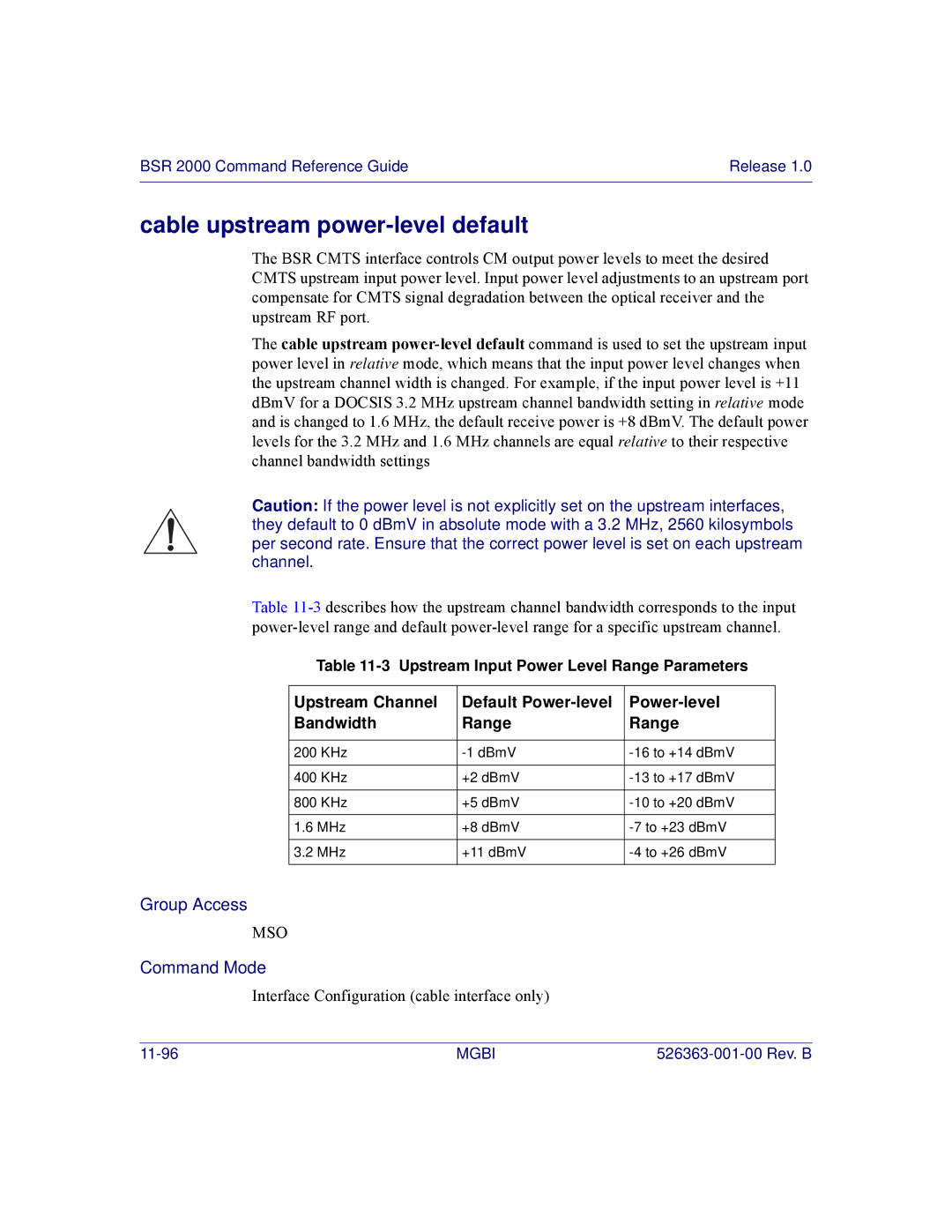BSR 2000 Command Reference Guide | Release 1.0 |
|
|
cable upstream power-level default
The BSR CMTS interface controls CM output power levels to meet the desired CMTS upstream input power level. Input power level adjustments to an upstream port compensate for CMTS signal degradation between the optical receiver and the upstream RF port.
The cable upstream
Caution: If the power level is not explicitly set on the upstream interfaces, they default to 0 dBmV in absolute mode with a 3.2 MHz, 2560 kilosymbols per second rate. Ensure that the correct power level is set on each upstream channel.
Table
Table
Upstream Channel | Default | |
Bandwidth | Range | Range |
|
|
|
200 KHz | ||
|
|
|
400 KHz | +2 dBmV | |
|
|
|
800 KHz | +5 dBmV | |
|
|
|
1.6 MHz | +8 dBmV | |
|
|
|
3.2 MHz | +11 dBmV | |
|
|
|
Group Access
MSO
Command Mode
Interface Configuration (cable interface only)
MGBI |
